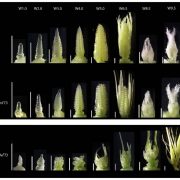
FLOWERING LOCUS T3 controls spikelet initiation but not floral development (Plant Physiol)
Plant Science Research WeeklyFT encodes a mobile protein that carries a flower-promoting signal to the shoot apical meristem. In most plants, the FT gene has duplicated and diversified. Mulki et al. investigated the function of FT3 (HvFT3) in barley. Prior work showed that overexpression of HvFT1 accellerated the initiation and…

Molecular events marking the onset of berry ripening in grapevine (Plant Physiol)
Plant Science Research WeeklyDo you know the difference between a wine made from Pinot noir grapes and one made from Cabernet Sauvignon grapes? Most people can taste a difference, but to really understand the wines you might want to go a bit deeper through metabolomic and transcriptomic approaches, as done by Fasoli et al. (in a…
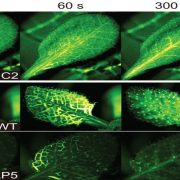
Glutamate is a wound-induced signal that activates long-distance calcium signaling (Science)
Plant Science Research WeeklySeveral years of intensive research have revealed a suite of mobile signals that travel long-distances to inform meristems on developmental phase transitions or to protect distal plant tissues from abiotic or biotic stressors. In a new article published in Science, Toyota et al. (2018) identify a role…

A shoot-derived miRNA ensures susceptibility to beneficial rhizobacteria in legumes (Science)
Plant Science Research WeeklyNitrogen-fixing rhizobacteria and leguminous plants engage in a tightly controlled root symbiosis resulting from bacteria-to-plant as well as (plant) shoot-to-root communication. This interplay controls the initiation and maintenance of root nodule development while preventing the over-production of…
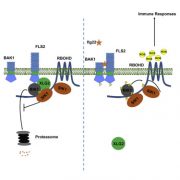
MAP4 kinase SIK1 promotes ROS burst and antibacterial immunity in plants (Cell Host Microbe)
Plant Science Research WeeklyCell surface pattern-recognition receptors (PRRs) such as FLS2 that recognize conserved pathogen features are important contributors to plant defenses against pathogens, triggering the so-called Pattern-Triggered Immunity (PTI) response. Pattern recognition by PRRs triggers the production of extracellular…

Wheat microbiome bacteria reduce virulence of pathogenic fungus by altering fungal histone acetylation (Nature Comms)
Plant Science Research WeeklySometimes the plant is a relatively passive host upon which other organisms engage in dynamic interactions. Chen et al. showed that a wheat head-associated bacterium, Pseudomonas piscium, produces antifungal compounds that inhibit the growth of a plant pathogenic fungus, Fusarium graminearum. The authors…
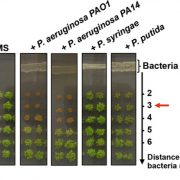
Arabidopsis seeds delay germination in the presence of pathogens (eLIFE)
Plant Science Research WeeklyThe rhizosphere represents a complex and dynamic environment that poses many challenges for seed germination and seedling establishment. While a number of well-characterized abiotic factors and hormone signaling pathways are known to contribute to the initiation of seed germination, our current understanding…
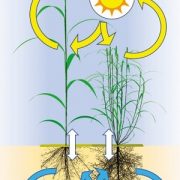
Functional-structural plant modeling to understand species mixtures (J Exp Bot)
Plant Science Research WeeklyMixing different plant species in a single field increases productivity by exploiting species complementarities for capturing resources (i.e. water, nutrients, sunlight). Both competition avoidance responses and individual organ accommodations to the changing environment contribute to this complementarity.…

What We're Reading: September 21st
WWR Full PostSpecial Issue: Long-distance signaling ($)
Of course plants need to communicate between their different parts, and our understanding of these crucial signals has been advancing rapidly. This issue of Plant Cell Physiology includes a set of papers highlighting recent findings. A meeting report by…

